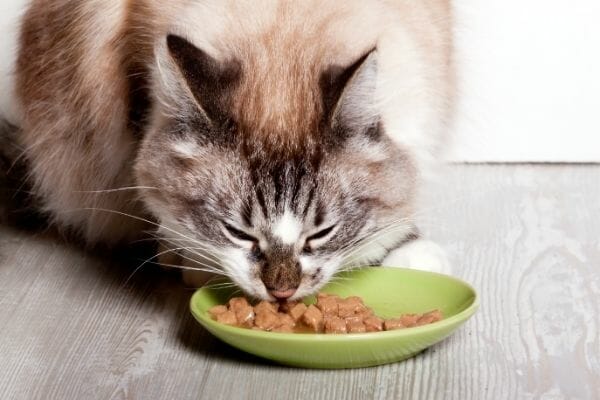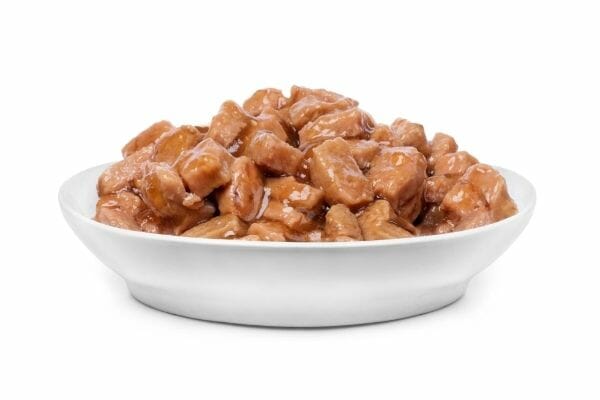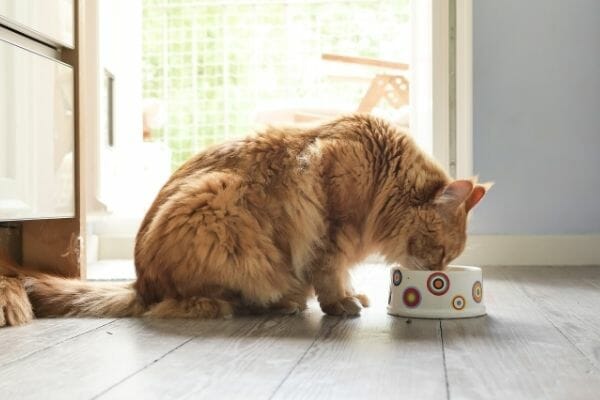A healthy cat is a happy cat. Contented kitties have all their needs met, from daily food intake and exercise to their mental stimulation and hours of sleep. When your furball suddenly loses weight or is under her prescribed weight (adult cats generally weigh a minimum of about 10 pounds), this is a cause for concern. Helping your cat gain weight is your immediate goal, but this must be done with the guidance of a veterinarian.
When your cat looks thinner than usual, a quick way to tell if she has lost some weight is by running your hands along her sides. If you can see and feel her ribs (and there is no fat covering it), she is likely underweight. Take her to the animal clinic so her vet can run a physical exam to determine the cause of her weight loss. These may be caused by factors such as:
- The cat food you buy her, which may be low in quality
- Your cat’s dislike for the current food being served to her
- Mouth or dental problems, making it difficult for your cat to eat
- An underlying health condition such as gastrointestinal problems, diabetes, chronic kidney disease, cancer, and hypothyroidism
- Stress or anxiety
Once a diagnosis is given, you can move on to helping your cat gain weight in a healthy manner. Here are some techniques you can try (with her vet’s approval, of course!):
1 Provide high-quality meals.
Be sure to purchase premium cat food that contains an excellent amount of nutrients. Go through the ingredients list in your cat food and make sure they are packed with protein such as tuna, chicken, barley, turkey, corn, and dried egg. Skip the ones that contain fillers (like animal by-products) and preservatives.
IdleCat shares a list of the best cat food for weight gain, with the right balance of protein, fat, and fiber. These include:
- Iams ProActive Health Kitten Food
- Iams ProActive Health High Protein Food
- Natural Balance Grain-Free Indoor Food
- Purina Tender Selects Blend Food
- Blue Buffalo Healthy Living Adult Food
Meanwhile, Allaboutcats.com lists Wellness CORE Natural Grain Free Chicken Turkey & Chicken Liver Pate Canned Cat Food as their top pick for canned food. They also recommend Hill’s Prescription Diet a/d Urgent Care with Chicken Canned Dog & Cat Food for older cats, and Go! Sensitivity + Shine Grain-Free Duck Pate Recipe as their budget-friendly pick.
Though the price of high-quality cat food may put a dent in your wallet, it will benefit your cat in the long run. Aside from helping her put on weight in a safe way, it will also result in a softer, shinier coat and improve digestion.

2 Modify your cat food.
Your cat may be telling you that she doesn’t like the new cat food you bought by ignoring it instead of eating it. Revert to your previous food supply, and mix the old and the new brands together. Start slow and just add a few pieces of the new one. Gradually adjust the ratio to serve more of the new food and see how your cat responds to it. If your cat really doesn’t like it, you’ll have to go back to your old brand or find another alternative.
3 Mix it up.
To help pack on the pounds, you can mix in some kitten food or wet canned food to your cat’s meal. Kitten food contains a higher amount of calories, proteins, vitamins, and minerals because it is made for growing kittens. Meanwhile, canned cat food is a good alternative for weight gain as it contains a higher amount of water and calories.
Be advised that you shouldn’t solely feed your adult cat canned food or kitten food. If they become used to these, they might not want to go back to eating their regular kibble. Just mix in the right amount of kitten food or canned food as prescribed by her vet. Too much of these might also make her gain weight in a shorter amount of time.
4 Intrigue your cat’s senses.
Make the cat food more appealing to your cat by targeting her sense of smell and taste. A whiff of a strong fishy odour from warmed cat food can beckon a cat to her bowl. Meanwhile, adding fish oil (such as salmon oil) or cat-friendly human food (such as yogurt) can improve the taste of any dish. Refer to our regularly updated list of human food and find out what’s safe for your cat to consume!

5 Adjust her meal frequency and portion servings.
PetMD reveals that a cat’s stomach is approximately the size of a ping-pong ball. It makes sense that she won’t be able to hold much in one sitting. Therefore, it’s best to provide her with small meals (about one tablespoon) every few hours. Take your cat’s lead and adjust accordingly if she asks for more food.
6 Give her treats throughout the day.
High in calories, cat treats can be given in between meals to restore your cat’s appetite. Offer her small portions of treats frequently such as bits of liver, fish, eggs, or freeze-dried chicken. However, don’t go over the recommended amount, which is 10% of the total calories your cat should eat.
7 Take away the factors that stress her out.
Try to keep your home environment as neutral and relaxed as possible. Eliminate or reduce your cat’s exposure to stressful elements (such as children or other pets) until her appetite returns. While she’s eating, stop yourself from hovering to check if she’s finished her meal. Let her enjoy it peacefully.

To recap
Get to the root of the problem and find out what’s causing your cat to lose weight. If it’s due to food-related concerns, this can be easily resolved by modifying what she’s eating. But if it’s health or behaviour-related, it’s always best to seek advice from your veterinarian before changing her meal plan.
We can help you be the best cat parent ever. Browse through our pet parenting guides today! You can also discover cute or peculiar things that cats do by checking out the cat behaviour category.
Leave a comment
Your email address will not be published. All fields are required.